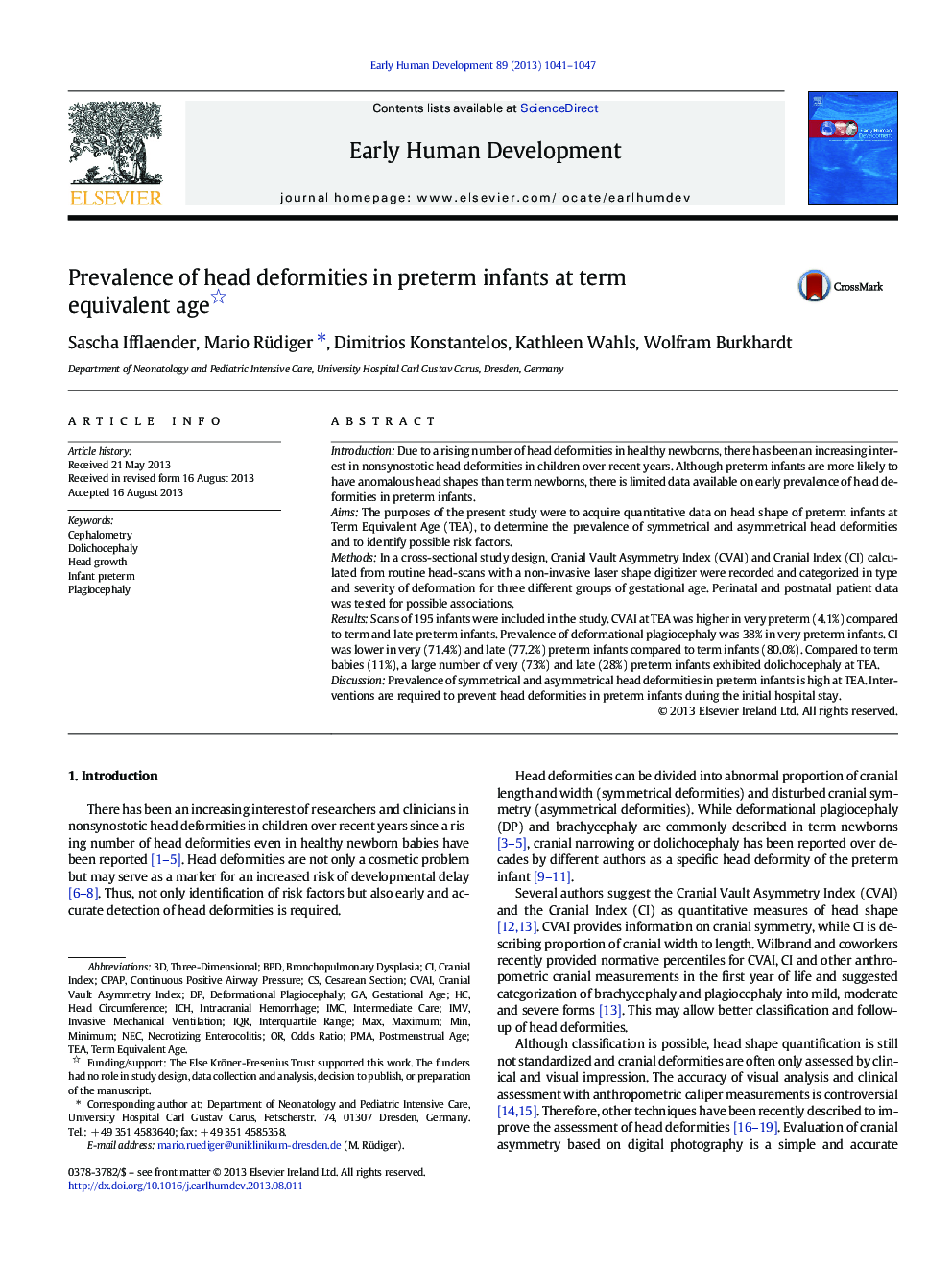| Article ID | Journal | Published Year | Pages | File Type |
|---|---|---|---|---|
| 6171944 | Early Human Development | 2013 | 7 Pages |
IntroductionDue to a rising number of head deformities in healthy newborns, there has been an increasing interest in nonsynostotic head deformities in children over recent years. Although preterm infants are more likely to have anomalous head shapes than term newborns, there is limited data available on early prevalence of head deformities in preterm infants.AimsThe purposes of the present study were to acquire quantitative data on head shape of preterm infants at Term Equivalent Age (TEA), to determine the prevalence of symmetrical and asymmetrical head deformities and to identify possible risk factors.MethodsIn a cross-sectional study design, Cranial Vault Asymmetry Index (CVAI) and Cranial Index (CI) calculated from routine head-scans with a non-invasive laser shape digitizer were recorded and categorized in type and severity of deformation for three different groups of gestational age. Perinatal and postnatal patient data was tested for possible associations.ResultsScans of 195 infants were included in the study. CVAI at TEA was higher in very preterm (4.1%) compared to term and late preterm infants. Prevalence of deformational plagiocephaly was 38% in very preterm infants. CI was lower in very (71.4%) and late (77.2%) preterm infants compared to term infants (80.0%). Compared to term babies (11%), a large number of very (73%) and late (28%) preterm infants exhibited dolichocephaly at TEA.DiscussionPrevalence of symmetrical and asymmetrical head deformities in preterm infants is high at TEA. Interventions are required to prevent head deformities in preterm infants during the initial hospital stay.
